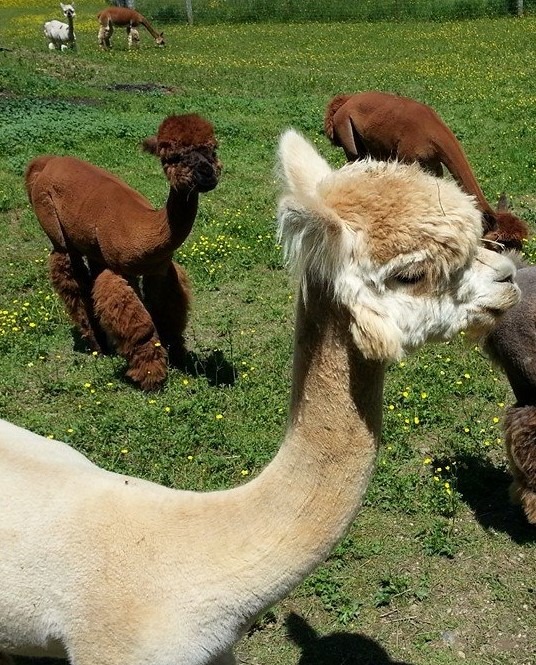- Author:
- JANNETTE DELGADO-OLMEDA, Suzanne Deadwyler
- Subject:
- English as a Second Language, Language, Grammar and Vocabulary
- Material Type:
- Activity/Lab, Teaching/Learning Strategy, Vocabulary
- Level:
- Upper Primary
- Tags:
- License:
- Creative Commons Attribution
- Language:
- English
- Media Formats:
- Graphics/Photos, Text/HTML
Education Standards
Contractions Sentence Strips
Curious Little Alpaca Contractions Practice
Little Alpaca TChart
Little_Alpaca with images
English Grammar for ELLs: Contractions

Overview
Students will gain an understanding of using contractions in speaking and in written text. They will identify word pairs used to make contractions and create contractions appropriately. They will also have a better understanding of how certain grammatical structures, like contractions, contribute to the overall understanding of a text.
Curious Little Alpaca
Note: I have remixed by adding attached resources described by the original author: Suzanne Deadwyler.
1. Teacher will need to create contraction flashcards and a matching game on small index cards. Include the following: can't/can not, don't/do not, won't/will not, aren't/are not, isn't/is not, didn't/did not, haven't/have not, hasn't/has not, hadn't/had not, couldn't/could not, wasn't/was not
2. Teacher will need to write sentences with each contraction pair (ie: "do not") on the board or on sentence strips to display to students. Call on student volunteers to read aloud each sentence and as they read, highlight or circle the contraction pair. Model how "do" and "not" are combined with an apostrophe and the "o" in "not" left out to create "don't." If students are unfamiliar with the apostrophe, suggest that it looks like an upside down comma. Explain that they will usually see can not written together as cannot, but either way they can be used to make the contraction can't.
3. Create a t-chart on board or chart paper. Write contractions on left side and with student input, model how two words come together to make a contraction. Model "don't" in both columns. Then students take turns "pulling apart" the remaining contractions. As a review, go through the flash cards for each pair/contraction. Then play the matching/Memory game with the cards flipped over for further practice. Students must match the word pairs to the correct contractions.
4. Give each student a copy of "Curious Little Alpaca." Explain that they will be reading a fictional text with contraction word pairs. You may need to define and discuss unfamiliar words/phrases from the text: curious, mischievous, bad influence, startled, majestic, wise. Instruct students to follow along as teacher reads aloud text. Then instruct students to go back through text, reading silently, and identify word pairs that can be combined to create contractions. Students will highlight pairs and then write the contractions above them. Then students will take turns reading the text, including the contractions this time.
5. For a follow-up lesson or assessment, make copies of the worksheet "Curious Little Alpaca: Contractions Practice." Allow the students time to complete the activity and then go through the correct answers together. Take time to engage in partner or group discussion of how the contractions contribute to comprehension of the story.
Lesson Goals: I can identify and understand contractions in a text and use them appropriately in my writing. I can read a text with contractions and explain how they contribute to my understanding of the story.
What is a contraction? It's a shorter way to write a combination of words. We use contractions frequently in our every day conversations. When you are frustrated you might say, "I can't do this. It's too hard!" When you break apart can't, you get the pair of words can not. When you break apart it's, you get it is. It's fun to make and break contractions. You can use them in your writing too, although it is sometimes more appropriate not use them if it is more formal text.
In this lesson you will read a story about a curious alpaca who faces some obstacles as he tries to satisfy his curiosity. Throughout the text you will notice word pairs that can be combined to make contractions. You will identify these and create contractions. You will discuss how the contractions contribute to the comprehension of the text.You will use a t-chart and flashcards to understand contractions and then play a game to practice.